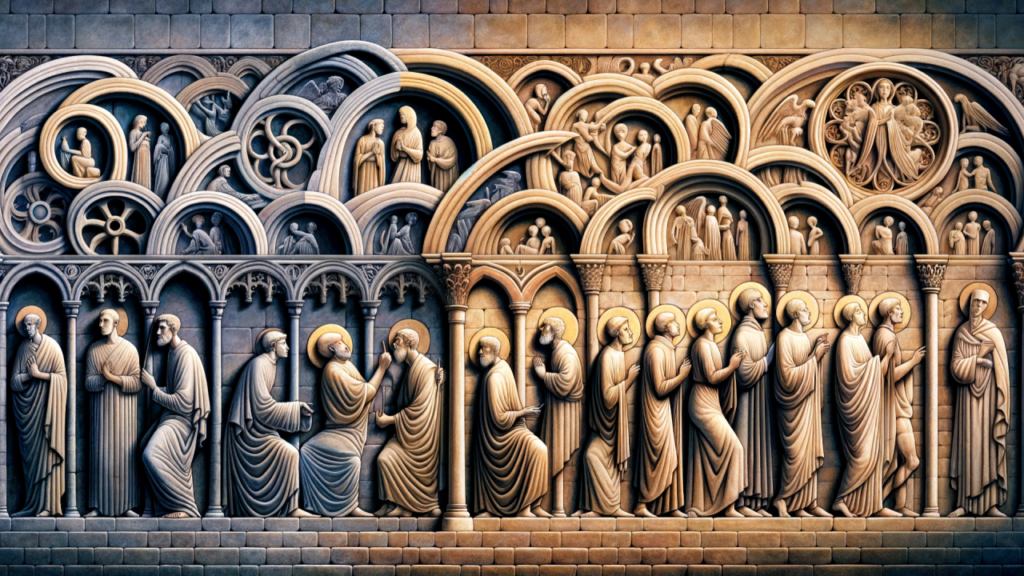Interior design is not just about aesthetics or making a space look good. It’s about creating functional, comfortable, and beautiful environments that enhance our daily lives. To truly appreciate the art and science of interior design, one must delve into its rich and fascinating history. From the ancient civilizations to modern minimalism, the evolution of interior design is a testament to humanity’s creativity and adaptability.
Ancient Beginnings: The Foundations of Interior Design

The history of interior design can be traced back to ancient times, when people first started decorating their homes and communal spaces.
Egyptian Era (3150 – 31 BC): Ancient Egyptians were among the first to incorporate interior design elements. They adorned their homes with murals, sculptures, and intricate furniture. Their interiors reflected their religious beliefs and social status, with lavish decorations in the homes of the elite.
Greek and Roman Influence (800 BC – 476 AD): The Greeks and Romans introduced symmetry, proportion, and harmony into interior design. They emphasized functionality, with furniture and décor often reflecting philosophical ideals. Mosaic floors, frescoes, and architectural columns became defining elements of this era.
The Medieval and Gothic Periods: A Shift in Style

As societies evolved, so did their interior design preferences.
Medieval Period (5th – 15th Century): During this era, interior design was heavily influenced by religion. Castles and churches featured heavy wooden furniture, tapestries, and stone walls. Decorative elements were sparse but symbolic, often depicting biblical scenes.
Gothic Style (12th – 16th Century): Gothic architecture brought intricate details and dramatic designs. Interiors featured pointed arches, stained glass windows, and vaulted ceilings, creating an ethereal and spiritual atmosphere
Renaissance to Rococo: The Birth of Elegance

The Industrial Revolution: The Democratization of Design
The 19th century Industrial Revolution brought significant changes to interior design. Mass production made furniture and decorative items more affordable and accessible.
Victorian Era (1837 – 1901): Interiors were heavily adorned with patterned wallpapers, rich fabrics, and eclectic furnishings. The Victorian style reflected a love for ornamentation and a blend of influences from different cultures.
Modern Movements: Function Meets Form

The 20th century ushered in modernism, emphasizing simplicity and functionality.
Art Nouveau (1890 – 1910): This movement celebrated organic forms, with interiors featuring flowing lines, floral motifs, and handcrafted details.
Art Deco (1920s – 1930s): Art Deco brought geometric patterns, metallic finishes, and luxurious materials into the design lexicon. It was a celebration of modernity and progress.
Mid-Century Modern (1940s – 1960s): Marked by clean lines, natural materials, and functionality, this style focused on creating comfortable and practical spaces.
Minimalism (1960s – Present): Minimalism emphasizes simplicity, with a “less is more” approach. Neutral color palettes, uncluttered spaces, and functional furniture define this style.
Contemporary Trends: A Blend of Past and Present
Today, interior design is a melting pot of styles, drawing inspiration from history while embracing innovation. Sustainability, technology integration, and personalization are key trends shaping modern interiors. From smart homes to biophilic designs, the focus is on creating spaces that enhance well-being and reflect individual lifestyles.
Conclusion
Studying the history of interior design offers invaluable insights into how cultural, technological, and societal changes have shaped the way we live. Each era has left its mark, contributing to the diverse and dynamic field of interior design we know today. By understanding its past, we can better appreciate its present and envision its future.
